Haar Singhar-Night Jasmine Health Benefits
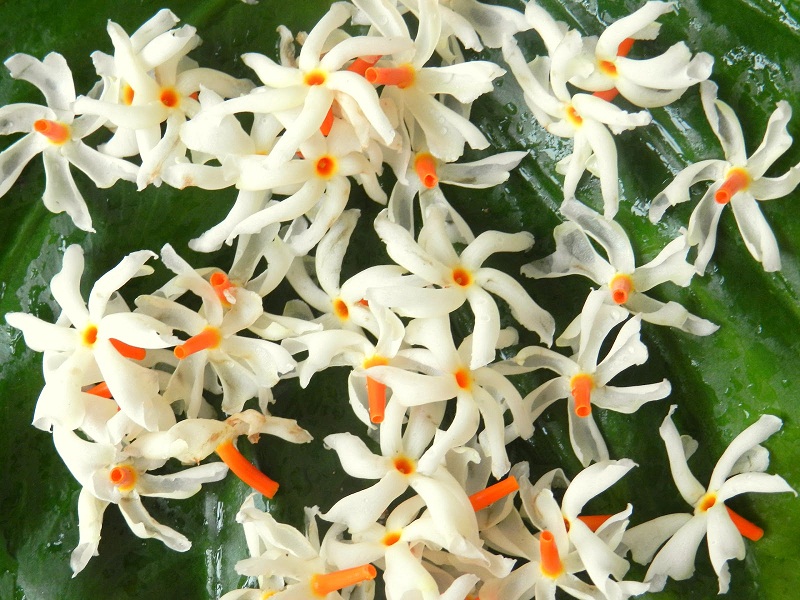
Nyctanthes arbor-tristis (Night-flowering Jasmine, Coral Jasmine) is a species of Nyctanthes, native to South Asia and Southeast Asia. It is a shrub or a small tree growing to 10 m tall, with flaky grey bark, large attractive rough and hairy leaves, and exotic highly perfumed small white flowers with an orange-red tube in the center.
The tree is sometimes called the “Tree of sorrow”, because the flowers lose their brightness during daytime; the scientific name arbor-tristis also means “sad tree”. The flower is the official flower of the state of West Bengal, India, and for Kanchanaburi Province, Thailand.
Night Jasmine blooms profusely, flowers are opening at night and casting off in the morning thus making a carpet of flowers, which are used in Buddhist temples, for worship.
Parijat (Nyctanthes arbor-tristis), appears in several Hindu religious stories and is often related to the Kalpavriksha. According to mythology, this heavenly tree was brought to earth by Krishna. Satyabhama and Rukmini, Krishna’s wives, had a quarrel over this tree. But Krishna planted the tree in Satyabhama’s courtyard in a way that when the tree flowered, the flowers fell in Rukmini’s courtyard.
Another romantic story woven around the tree is about Parijataka, a princess. She fell in love with the sun but when he deserted her she committed suicide and a tree sprung from the ashes. Unable to stand the sight of the lover who left her, the tree flowers only at night and sheds them like tear-drops before the sun rises.
It is believed that Parijat (Nyctanthes arbor-tristis) is one of the five trees that exist in heaven.
Common names: Indian Lover’s Tree, Coral Jasmine, Parijat, Arbor Tristis, Sad Tree, Night Jasmine, Parijat
Family: Oleaceae
Genus: Nyctanthes
Species: arbor-tristis
Synonyms: Bruschia macrocarpa, Nyctanthes dentata, Nyctanthes tristis, Parilium arbor-tristis, Scabrita scabra, Scabrita triflora
Native: South Asia and Southeast Asia
Plant type: Shrub or tree
Hardiness: USDA Zone 10b: to 1.7 °C (35 °F), USDA Zone 11: above 4.5 °C (40 °F)
Light: Full Sun, Sun to Partial Shade
Medicinal uses:
Nyctanthes arbor tristis is widely used in the Ayurvedic system of medicine for treatment of many ailments.
• Leaves: Antibacterial, Anthelmintic, Anti-inflammatory, Hepatoprotective, Immunopotential, Anti-pyretic, Antioxidant and Anti-fungal. Parijat leaves have been used in Ayurvedic medicine and Homoeopathy for sciatica, arthritis, fevers, and as a laxative. Patients with gynecological problems are advised to take 3 fresh night jasmine leaves, with 5 black peppers. leaves are also blend into a paste and used in skin related troubles, especially ringworm. The leaf juice is mixed with common salt to treat intestinal worms.
• Flowers: Diuretic, Anti-bilious, Antioxidant, Anti-inflammatory, Sedative and Anti-filarial. The decoction of night jasmine flowers is used in treating gout.
• Seeds: Antibacterial, Antifungal, Immunomodulatory and Antileishmanial. The seeds are crushed and the aqueous paste is applied externally on the piles. They are also useful in treating baldness, scurvy and affections of the scalp. The decoction of its seeds is used as a hair tonic. Washing hair daily with this tonic helps to get rid of dandruff and lice.
• Bark: Anti-microbial.
• Stem: Antipyretic and Antioxidant.
• Night Jasmine is very useful in treating constipation in children. Coral jasmine is used in the treatment of fungal skin infection, dry cough, and bronchitis and as an antidote for snakebites. It is also used to treat anxiety, restlessness, headaches, gastritis, hepatitis, diarrhea, vertigo and dysmenorrhoea.
Other uses:
• Nyctanthes arbor-tristis new leaves are fried and used as a recipe in some Assamese and Bengali cuisines. Its dried flowers are used as components of recipe in Assamese food.
• The flowers can be used as a source of yellow dye for clothing.
• Flower oil is used as perfume.
Growing tips:
• Use well drained soil and fertilize once a month.
• Propagation is easier by seeds as cuttings are very hard to root. It is recommended scarring the seeds, soaking them for 24 hours, and then planting them in a non-soil seeding mix. You’ll probably want to give them some bottom heat and keep them in about 70 degrees. Don’t let them dry out, but no need to drown them as the soaking will have moistened the interior of the seed.
• The plant needs warmth during winter months.
Safety notes: This website is for educational purposes only and is not medical advice, and please check with your doctor before using plants if you are pregnant, using medications or have other health conditions.
Harsinghar, Night Jasmine – ہارسنگھار
ماہیت ۔ اس درخت کے پتے کھردرے موٹے اور نوکیلے اور ان پر چھوٹے بال سے ہوتے ہیں ۔ پھول ننھے اور خوشبودار چنبیلی کی مانند لیکن اس کی پنکھڑیاں سفید اور نچلانالی نام حصہ زردی مائل سرخ ہوتاہے۔ اس حصے کو علیحدہ کرکے پانی میں ابال کر کپڑے رنگے جاتے ہیں ۔
اس درخت کے پتے کھردرے موٹے اور نوکیلے اور ان پر چھوٹے بال سے ہوتے ہیں ۔پھول ننھے اور خوشبودار چنبیلی کی مانند لیکن اس کی پنکھڑیاں سفید اور نچلانالی نام حصہ زردی مائل سرخ ہوتاہے۔اس حصے کو علیحدہ کرکے پانی میں ابال کر کپڑے رنگے جاتے ہیں ۔
مقام پیدائش ۔ پاکستان اورانڈیا میں ہرجگہ اور انڈیا کے جنگلات میں خودرو ہے۔
مزاج ۔ بعض کے نزدیک ۔گرم خشک ۔
افعال و استعمال ۔ اس کے پتوں کو ادرک کے ہمراہ پانی میں پیس کر دینا پرانے بخاروں کے لئے مفیدہے خونی بواسیر کے لیے پھول رات کو پانی میں بھگو کر صبح زلال پلاتے ہیں تازہ پتوں کا رس شیر خوار بچوں کیلئے بے ضرر مسہل ہے۔اس درخت ایک گوند اور جڑ مقوی باہ ہے
مقدارخوراک ۔ ایک سے دو گرام ۔
ہار سنگھار
دافع بخار، اینٹی بائیوٹکس، دافع جَراثیم ، انٹی سوجن یا سوزش، پیٹ کے کیڑوں کو خارِج کرنے والی دوا، گلے سے بلغم نکالنے والی دوا ، تپ مار دوا۔ جؤر ناسک، دست آور ، قابض دوا ، آشوبِ چشم ، بھوک لگانے والی ، دفع ریاح ، ہاضم ، بچوں کی قبض دور کرے، جوڑوں میں درد کا علاج، گٹھیا ۔ وجع المفاصل ۔ درد انگیز ورم جس میں جوڑوں اور عضلات میں سختی بھی آ جاتی ہے ۔ اور درد بھی ہونے لگتا ہے، خارش ۔ داد چمبل کی بیماری کی دوا

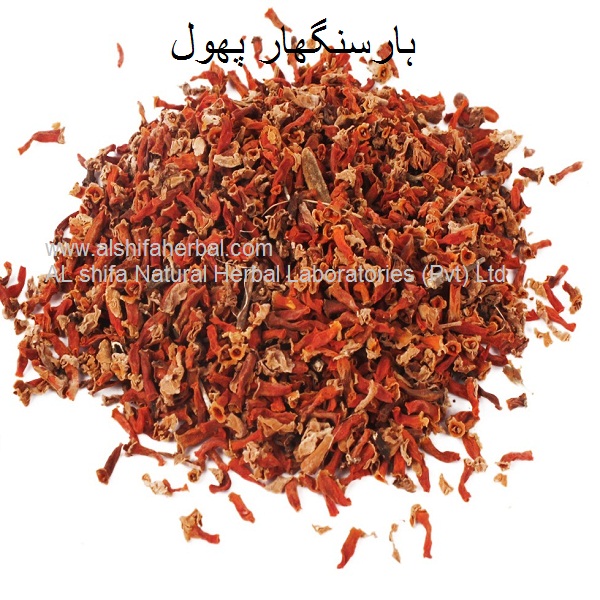


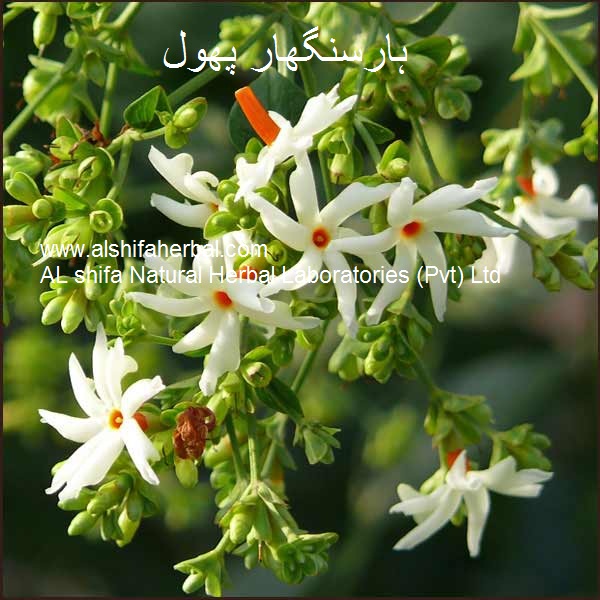
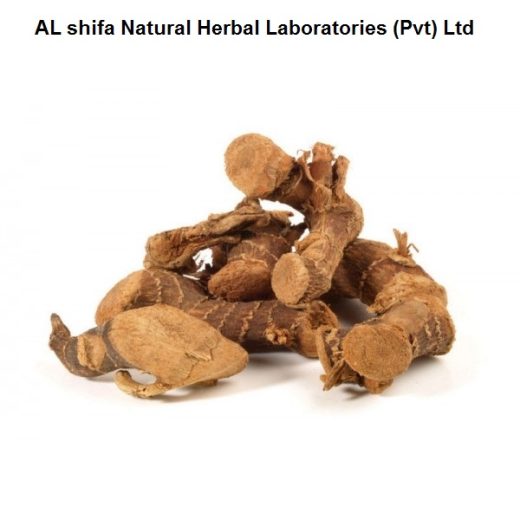
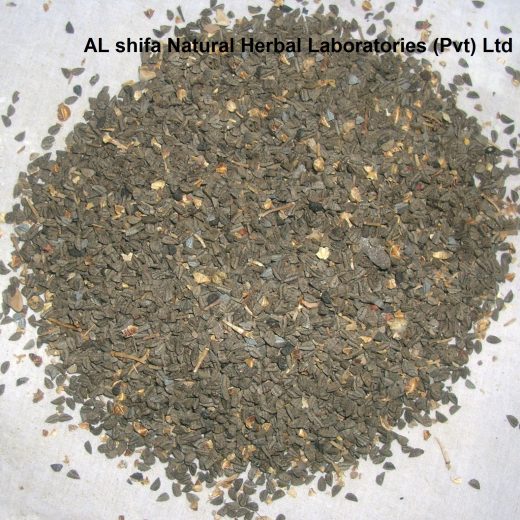
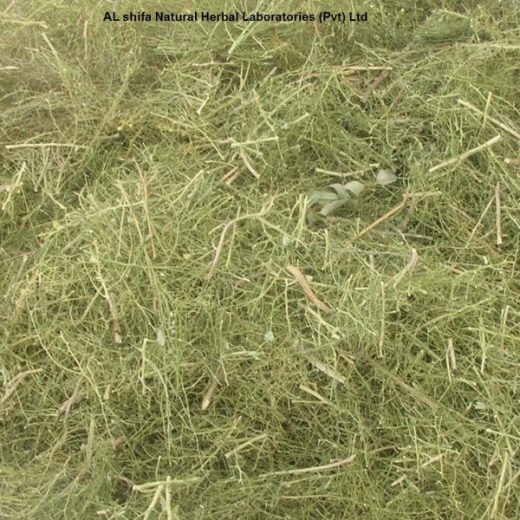



Reviews
There are no reviews yet.